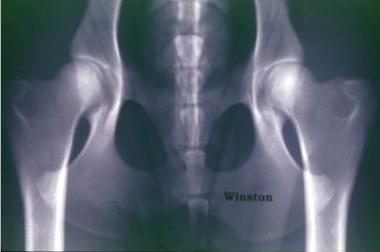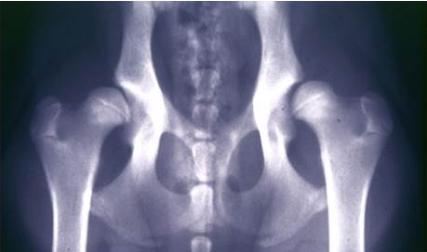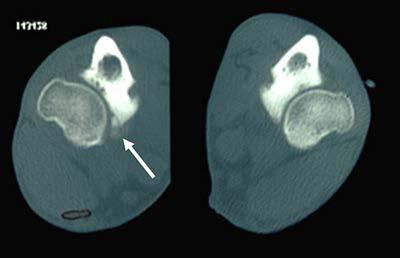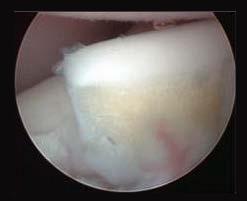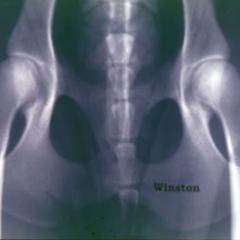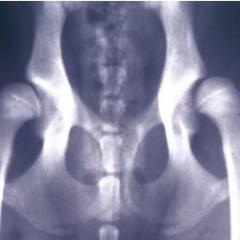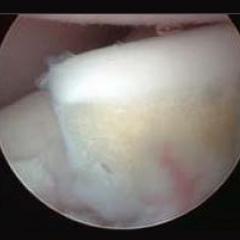Orthopedic Foundation for Animals' Database
-
Hip scores and pedigrees used to generate these breeding values were generously provided by the OFA.
-
The OFA is acknowledged for accumulation of radiographic data for almost 50 years. The OFA hip scores and pedigrees of these dogs in the public database were used for the genetic evaluation.
- Hip radiographs were taken by a veterinarian with the dog in the hip-extended, supine position according to the American Veterinary Medical Association guidelines and were sent to the OFA by the owner. The radiographs were independently evaluated by 3 randomly selected board-certified radiologists from a pool of 20-25 (concordance rates average 74% over 1.8 million radiographs).
-
For hip dysplasia, dogs were scored into seven categories: excellent, good, fair, borderline, mild, moderate and severe hip dysplasia. The first three categories (excellent, good and fair) are generally considered “normal” dogs although they will carry some of the mutations that contribute to hip dysplasia. The last three categories (mild, moderate and severe) are considered “dysplastic” dogs.
-
For elbow dysplasia, there is a category of normal, or unaffected, and three categories of worsening elbow dysplasia as evidenced by increasing severity of radiographic osteoarthritis.
-
Development of this breeding value web site was made based on our careful evaluation of the OFA database for ALL pure breed dogs in the public registry. This analysis was undertaken independently of the OFA by members of the Cornell University Statistical Consulting Unit.
- Further details on the breeds and the scoring criterion can be found in this published paper. A new manuscript is in preparation. Images of dogs with good and poor (dysplastic) hip conformation and also a tomographic slice through the elbow of a dog with fragmented medial coronoid process (part of the elbow dysplasia syndrome) can be seen below.
Image



